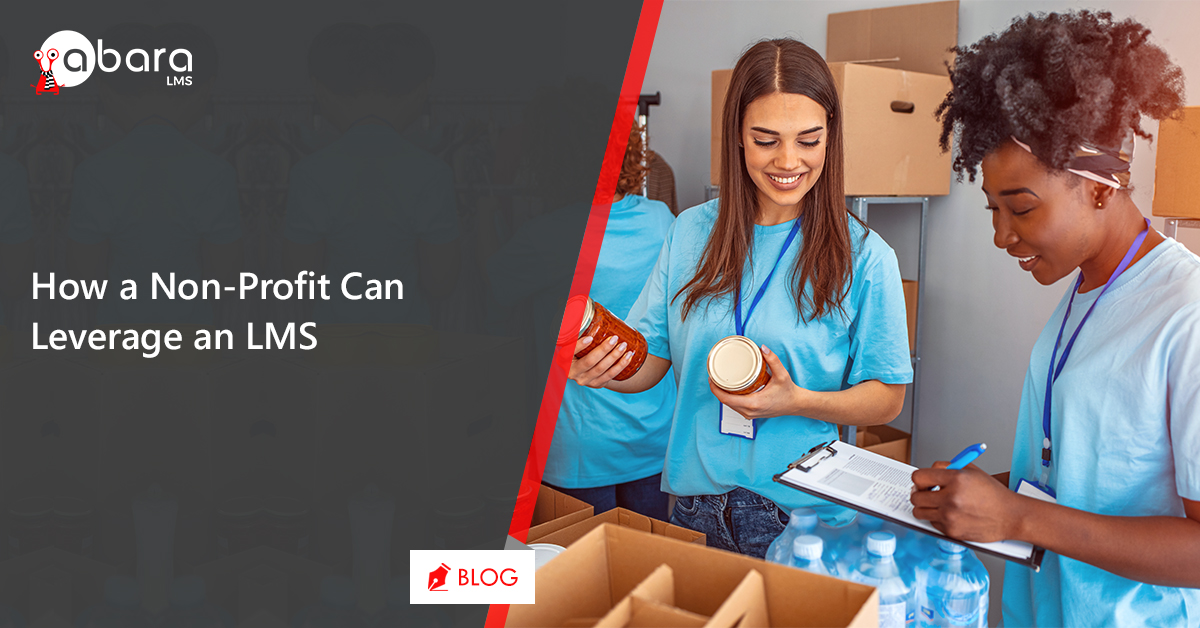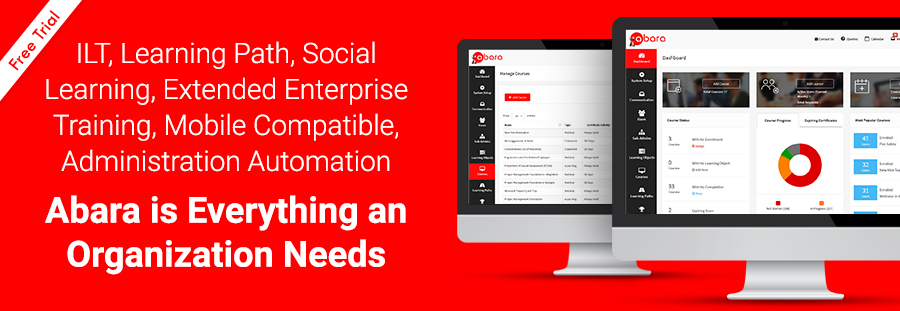We need to know a few things about LMS for non-profits and how non-profits operate before we understand how adopting a Learning Management System (LMS) can greatly benefit them in the short and long run.
Did you know that non-profits contribute to nearly 10% of overall employment in the United States? It ranks third, only behind retail and manufacturing in terms of providing employment. It also contributes anywhere from 5& to 10% of the US economy. You can deep dive into this report from Johns Hopkins Center for Civil Society Studies 2020 Non-Profit Employment Report: https://ccss.jhu.edu/wp-content/uploads/downloads/2020/06/2020-Nonprofit-Employment-Report_FINAL_6.2020.pdf
A common myth is that non-profits are supposed to operate at zero profit. It is true that the key objective of a non-profit is to create a positive impact in an area or multiple areas that they operate in and are not drive by profit motive. However, a non-profit would always prefer to remain in a cash/income-positive state of existence to sustain their business in the long run. They further would also like to stay net positive with cash/income, with a provision for unforeseen challenges such as a dip in fund raising/income and to also create a contingency for future expansion to new territories or areas.
Non-profits have a proper structure just like large and medium corporate organizations with a pre-defined hierarchy. They also face some similar challenges as corporates in terms of sustainability, expansion, opening new geographies, employee training, engagement and communication.
This is where the role of LMS comes into play http://staging.abaralms.com/lms-for-non-profits/ and off-sets these challenges in terms of providing a medium to communication, employee orientation, training, onboarding, engagement, opening, and even sustaining streams of revenue.
An LMS can help keep these costs down while at the same time enhancing the operational efficiency of a non–profit.
The article below articulates how a Learning Management System (LMS) can play a pivotal role in the operations of a non-profit.
On this Page
Centralized Administrative Controls
A non-profit can operate locally, intra-state, and even across countries. Although their operations may be decentralized, they would need to have a central management team coordinating the policies, new developments, guidelines across departments and geographies.
An LMS would let the central administration team coordinate the organization’s training on policies, procedures, and other operational drivers. Working through a central hub to ensure standardization makes a whole lot of sense for a non-profit just like any other corporate organization.
They could have separate communication lines across hierarchical levels, locations and job roles allowing them for a flexible communication system.
Onboarding and Training Within Non-Profits
A non-profit hierarchy usually has a CEO, a Board of Directors, committee members, staff and volunteers.
The volunteers make up for the bulk of non-profit employees. These volunteers are dynamic they keep leaving and new volunteers join the fray.
By 2019, almost 63 million Americans would have volunteered at some point their own time for non-profits.
While the leadership team and on-board staff mostly stay for longer durations and forms a core team, the new volunteers are in continuous rotation, with new people joining at regular intervals. Often they join at multi locations and need to be trained, onboarded, certified, have on-time communication of new developments and announcements.
Here a LMS can play a role in disseminating new crucial information and training to the volunteers in the shortest possible time while keeping the costs low.
Certification also may be a critical aspect of the new employee onboarding process especially in terms of compliance and policies.
An LMS can also be leveraged to enhance the soft skills of existing staff.
A non-profit also may tie with other partners to attain their objectives. An LMS can help with the partner onboarding process.
Non-Profit Revenues
A myth that donations form the major revenue stream of a non-profit is incorrect. Its contribution is placed at around 15 % of their total revenue. An interesting article from Prosper Strategies sheds light on this. https://prosper-strategies.com/2020-nonprofit-stats/
The fact is that close to 50% of a non-profit revenue comes in from fees, programs, courses, materials, goods, and services offered by the non-profit.
An LMS can be leveraged to monetize the non-profit’s courses, distribute courses, materials, and programs. The ability to distribute some of this content via eCommerce using an online platform to enhance their contribution to their revenue streams makes a lot of sense.
They can also distribute and share their free content/ courses with their target base to improve awareness and even attract a base of talent – both core and volunteers.
Existing Resources Utilization
A non-profit may have an extensive library of their own intellectual property, resources, and materials they would need to share across their network. A LMS can accommodate documents, PDFs, and videos, and allow for seamless dissemination across the system and even different geographies.
Social sharing and messaging may also be utilized via an LMS as social integration would help non-profits to expand their reach to more existing and potential donors and volunteers.
Branding and White Labelling
A non-profit would prefer that their training content and resources shared would have their company branding including logos and colors.
An LMS, through white-labeling, would help a non-profit retain its original brand identity while reaching out to employees, partners, donors and the public creating brand awareness and recognition.
Geography and Diversity
A non-profit may be large or small, however they will attempt to open new locations to expand their reach. This makes it imperative that new staff and volunteers are trained as soon as they start at a new location.
Having volunteers meet at a central location for their onboarding is expensive and not feasible. Covid-19 has demonstrated that a vast number of in-person meetings and training can be successfully substituted with virtual and remote discussions, and even fully digital substitutes like video etc.
On joining a non-profit, a volunteer would need to understand their roles and duties within the organization’s existing values, framework, and goals. An LMS can work as a support mechanism for existing and new volunteers. An LMS can also help with their training, upskilling, certification, along with broadcast of important announcements and developments.
A non-profit will have a diverse set of employees who need to be on the same page in terms of the organization’s objectives, communications, compliance, and an LMS can help standardize this.
Multi-Tenancy or Multi-Portal LMS
A non-profit will have different stakeholders including staff, volunteers, investors, donors, and subscribers. They cannot have a single portal to touch base with each segment. Some of the crucial information shared may be on a need-to-know basis.
An LMS that can provide a multi-portal setup. So for example, the volunteers would have their own portal for training and communication, internal teams could have another dedicated portal for training, and updates on new developments and announcements.
A core LMS will be able to cater to all the non-profit segments via a multi-portal system. It would also offer scalability when the NGO expands its reach and user base. An LMS can be seamlessly scaled to meet growing demands.
Flexible Multi-Device Delivery of Learning
A corporate organization would have greater control on their IT by issuing desktops/laptops to their employees. A typical non-profit employee or volunteer will not have a dedicated company-owned device and may have to rely on their own communication device including desktop, tablet, laptop, and their own mobile device.
The team member – whether a volunteer or a remote employee – of a non-profit must have the ability to get trained even if they are located in a remote location on a personal mobile device/tablet, both online and offline.
A good LMS provides multi-device mechanisms to disseminate information and training modules across multiple devices and in real-time. They could also customize their training and internal communication to be more location or department-centric rather than have the same communication to all.
An LMS also allows for flexibility to use both digital, virtual, and classroom learning to provide a blended training advantage for the non-profit’s future options.
Enhance Revenue Through Training and Engagement
The more trained a staff member or volunteer is, the more capable they will be to contribute to the non-profit. An LMS would be able to train, upskill, and certify the staff by helping them be more engaged and connected with the organization. They could create new courses and materials, and distribute them in real-time to expand their revenue earning through eLearning.
A non-profit with a good training system in place is more likely to do better, by growing revenues than a non-profit without a medium to engage and train its employees.
Limited Overhead Costs and Resources
A non-profit would work on a limited budget and at the same time achieve the operational efficiency of a corporate.
An LMS can provide such a delivery mechanism for their entire team which could be located across geographies. By allowing remote and virtual training delivery, an LMS makes a non-profit’s training initiatives scalable. It provides real-time delivery capabilities and user-friendly features with a central hub for control and administration of the system.
They can do all this through an LMS without a strain on their overhead costs.
An active user LMS pricing model would allow a non-profit to reach out and train new volunteers even if there is a heavy rotation of volunteers, without increasing the fixed LMS costs for the non-profit.
Most LMS companies offer differential pricing for non-profits thus enabling further reduction of overhead costs.
Tracking and Report Analysis
An LMS would provide a means to track a non-profit’s staff onboarding across locations, training, and results. Non-profit organizations could track their own as well as their employees’ progress at every stage to ensure they are on the right track.
A non-profit would want a continuous update on their manpower onboarding, training progress, compliance, certification, and analysis of progress.
Fundraising and Updates to Key Stakeholders
A non-profit would heavily rely on donors as a source of their funds. An LMS would go a long way to disburse key real-time information to vital stakeholders like donors on an ongoing basis.
For many non-profits, education of their target audience is a keyway to empower and improve the lives of the people they serve. This could be people who are at a social disadvantage, people affected by hardships – whether it comes to economic or social matters. Education is one of the most powerful way to uplift communities across the world.
If you are part of a non-profit where education and training are a key part of your outreach activities, an LMS will go a long way in delivering this training and providing real-time data to all stakeholders. The ability to track progress, usage, completion statistics etc. could help provide transparency to donors and help in mobilizing funds as well.
Conclusion
A non-profit wanting to grow must be prepared for continuous changes and challenges, especially in the current environment. An LMS can provide an intuitive and simple but enhancing user experience and be a smart step towards a non-profit’s operational efficiency and growth.
You can now take a free demo to experience the capability and flexibility of a learning management system. Take a free demo of ABARA LMS right here, http://staging.abaralms.com/free-trial/
ABARA offers a risk-free trial for 30 days.


